Dwellbeing
Liberty Mutual’s innovation team launched DwellBeing, a mobile app designed to help homeowners proactively manage home maintenance tasks while strengthening customer loyalty and reducing claims. Despite a promising concept, early engagement and retention metrics were low, leaving leadership questioning whether the app had long-term viability.
Role & Objective
I supported the Liberty Mutual team as a product strategist, working closely with UX designers, researchers, product managers, and operation specialists.
My task was to:
- Diagnosing and addressing the core engagement barriers.
- Restructuring the onboarding and task scheduling experience to feel more tailored and seamless.
- Facilitating research to better understand homeowner motivations.
- Equipping the DwellBeing product team with sustainable discovery and iteration practices.
- Helping Liberty Mutual make a strategic decision: whether to continue investing in DwellBeing or pivot resources elsewhere.
This engagement wasn’t just about improving the app—it was equally about validating whether it was worth continued support. Part of the value I brought to the project was helping Liberty Mutual avoid unnecessary investment by determining what not to build.
Key Challenges:
- Only 11% of users completed enough tasks to maximize rewards.
- User retention sharply declined over 30, 60, and 90-day periods.
- Users struggled to see ongoing value, citing low task relevancy and effort required.
Approach
Establishing Discovery Rhythms
Despite having some tangible data to inform why the app MVP had been faltering, the team lacked a structured way to gather, prioritize, and act on those insights. In the intial stage of the project I introduced a continuous discovery framework to the team. We organized the painpoints, identified goals, risks, assumptions, and questions around each, and then developed "How Might We" statements, which allowed us to:
- Cluster ideas based on business goals and user needs.
- Prioritize them strategically.
- Translate them into focused design sprints.
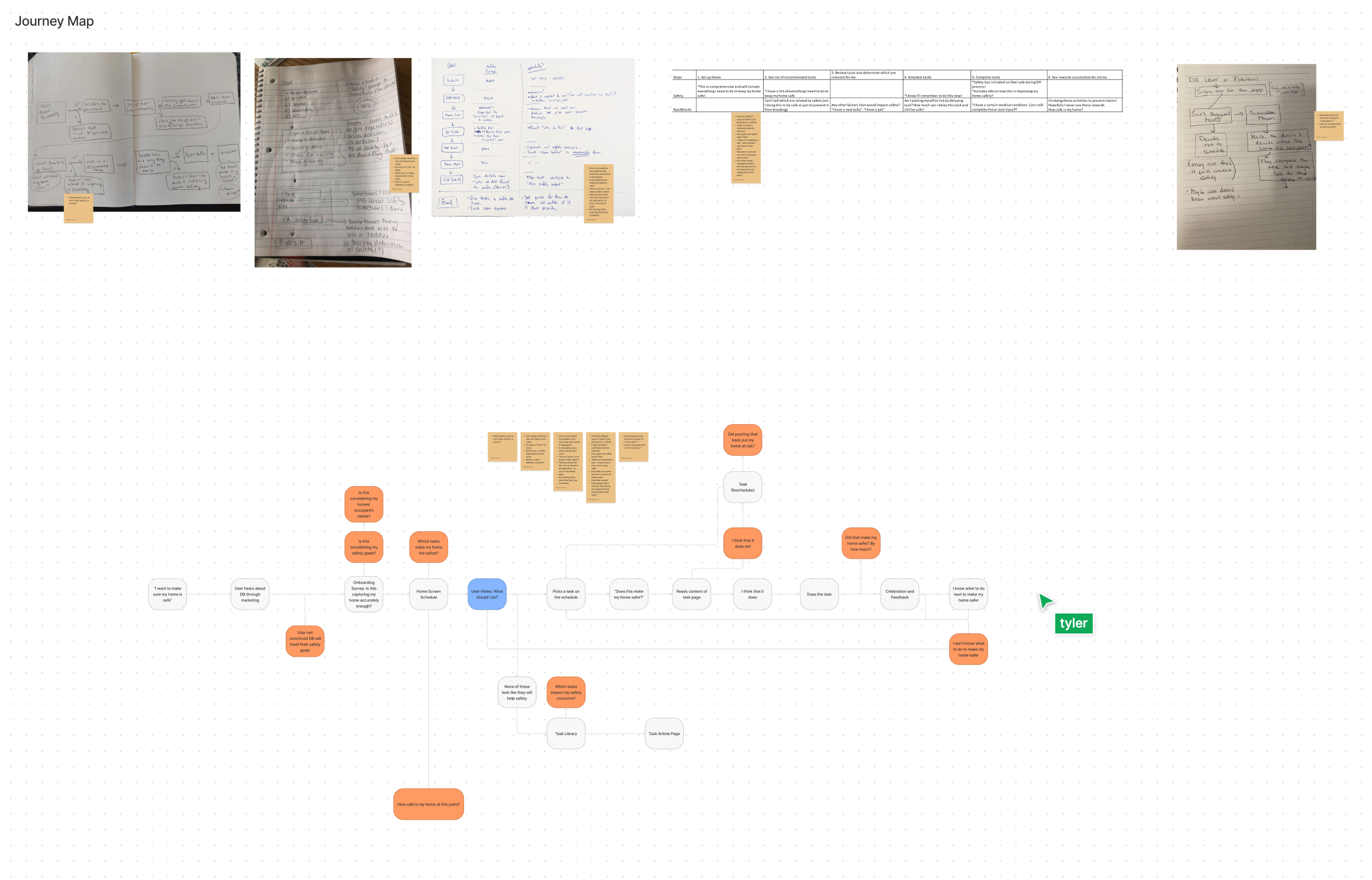
Collaborative discovery workshops anchored our approach in cross-functional alignment and continuous learning.
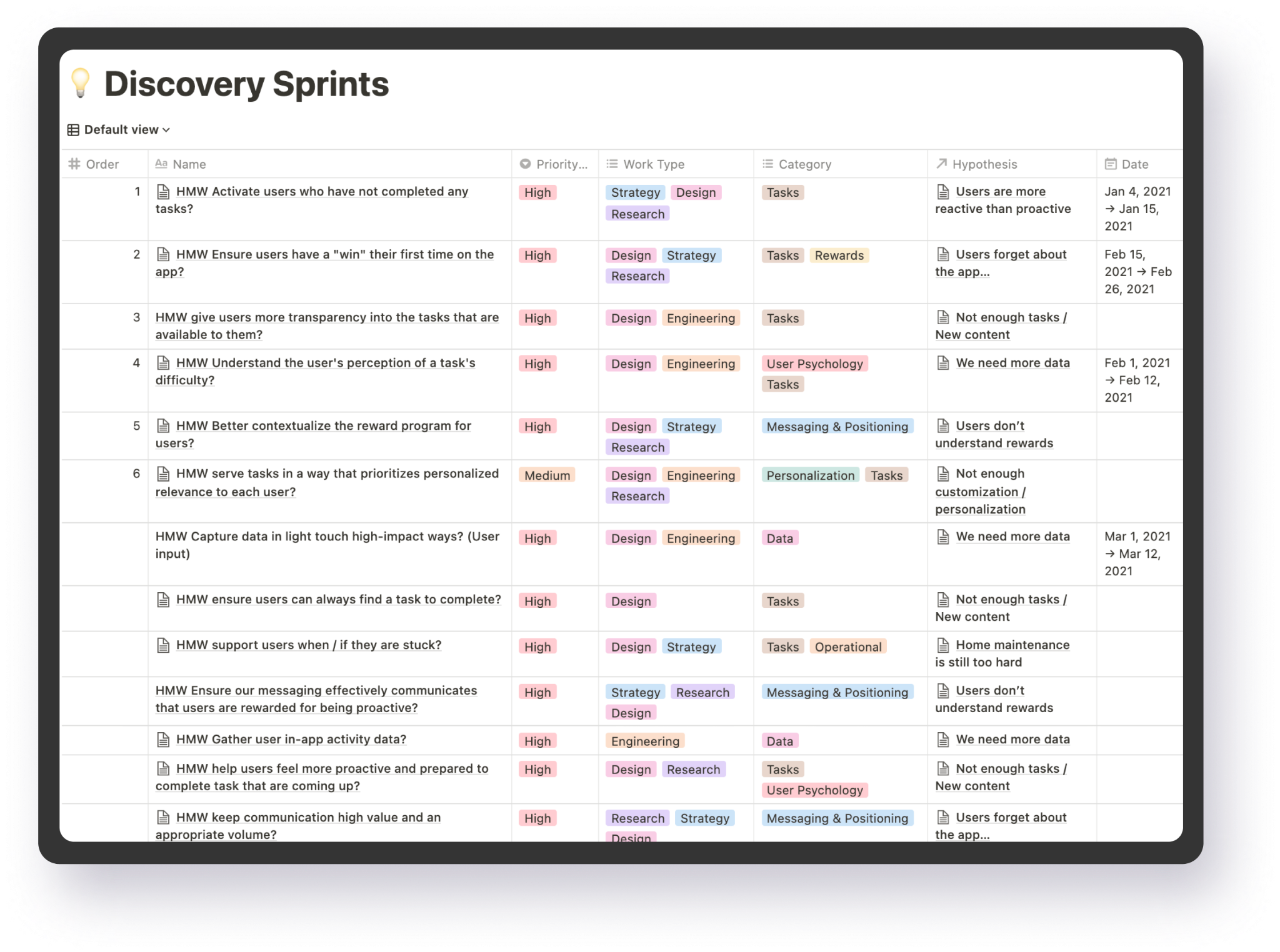
I worked with the team to created a organized and tagged database of potential sprints, which we then prioritized together.
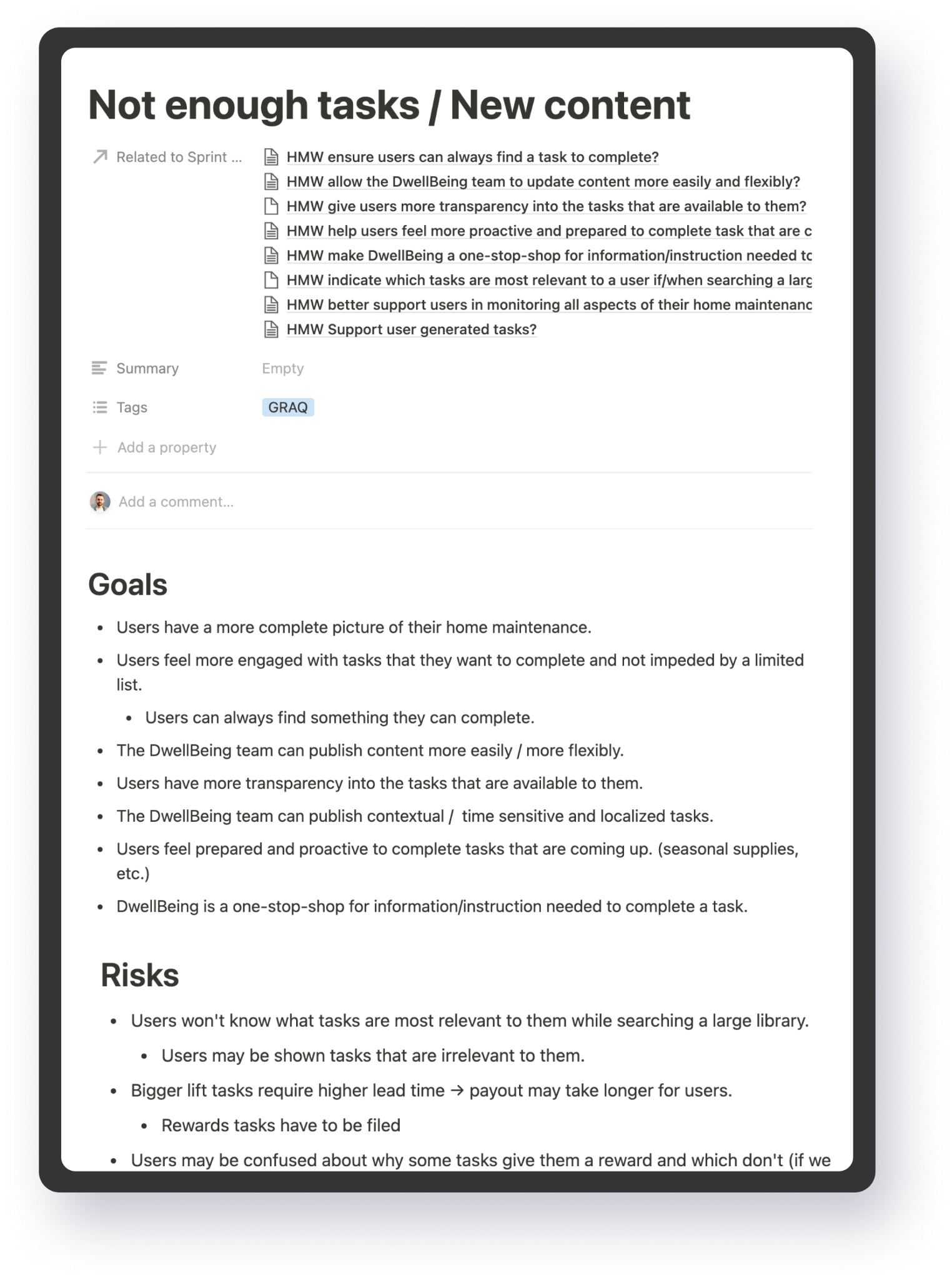
We introduced structured methods like GRAQ exercises to align the team around clear, prioritized opportunities.
Iterating Through Sprints
I supported the team in planning and executing on the topics we prioritized in our initial exercises. This culminated in nine sprints, all with different objectives to research, iterate, and test different aspects of the app experience to build a fuller picture of how a new MVP could be successful.
Through each sprint I guided the product team through planning, ideation, prototyping, and testing.
Sprint 1: Current User Discovery
Conducted interviews with active and churned users to establish a baseline understanding of key personas (first-time vs. veteran homeowners) and reasons for drop-off.
Sprint 2: Personalization Thresholds
Tested user perceptions of task personalization, balancing between scalable solutions and deeply customized experiences.
User Insight:
"A lot of this isn’t relevant for my home. If I had a chance to earn up to $25 a quarter but only 2 tasks are relevant, it’s not enough for me."
Sprint 3: Task Planning & Completion Barriers
Investigated why users weren’t completing tasks. Resulted in concepts around task reminders, progress tracking, and lower-effort options.
User Insight:
"Laziness, let's face it. As I scrolled through it, I have this under control—do this already. Not new—didn't inspire me, I need to be doing that."
Sprint 4: SME Deep Dive & Task Library Development
Partnered with Liberty Mutual subject matter experts to expand the task library and map onboarding questions to task relevance.
Outcome: Created an onboarding decision tree that tied home attributes directly to tasks, making lists feel more tailored.
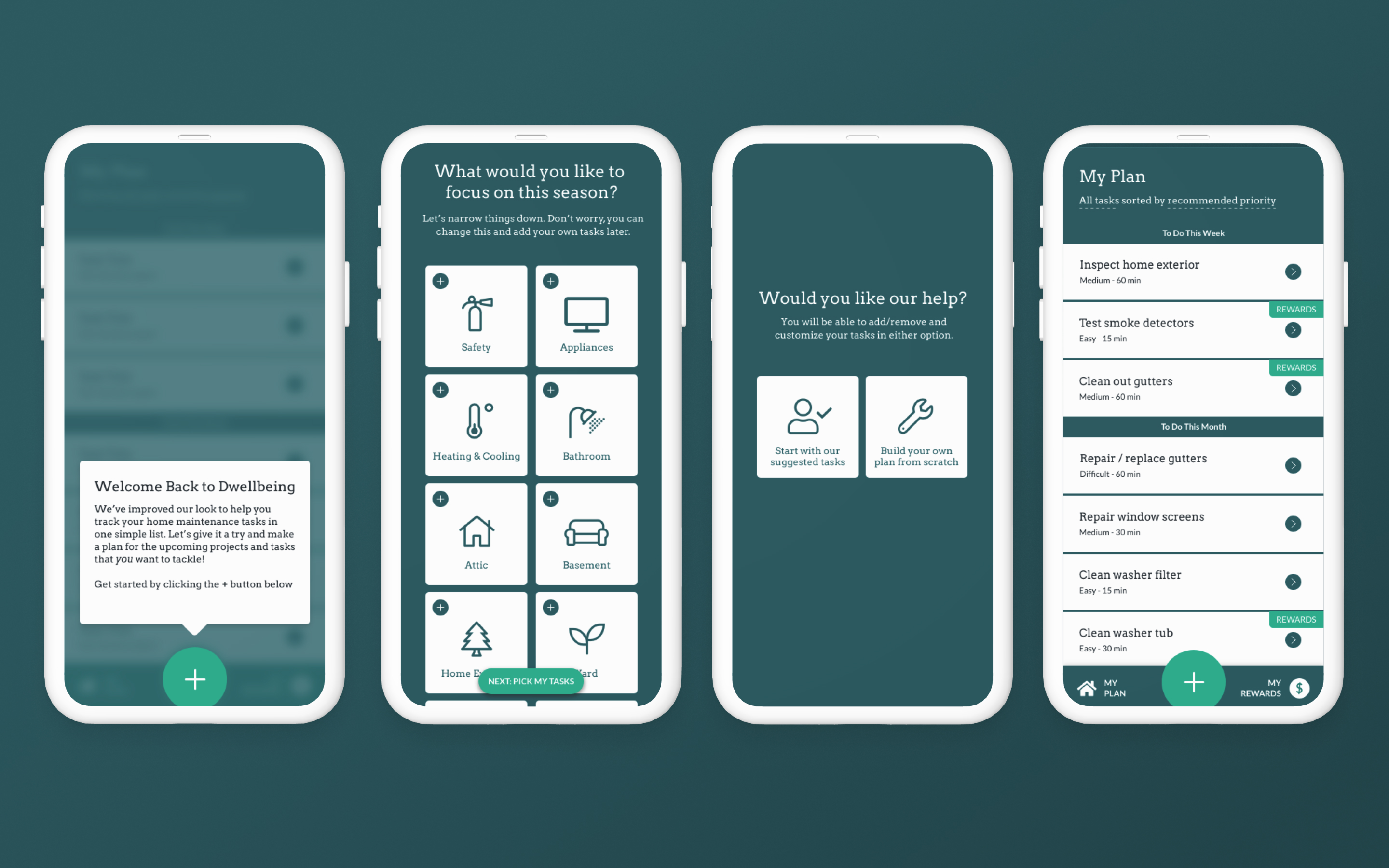
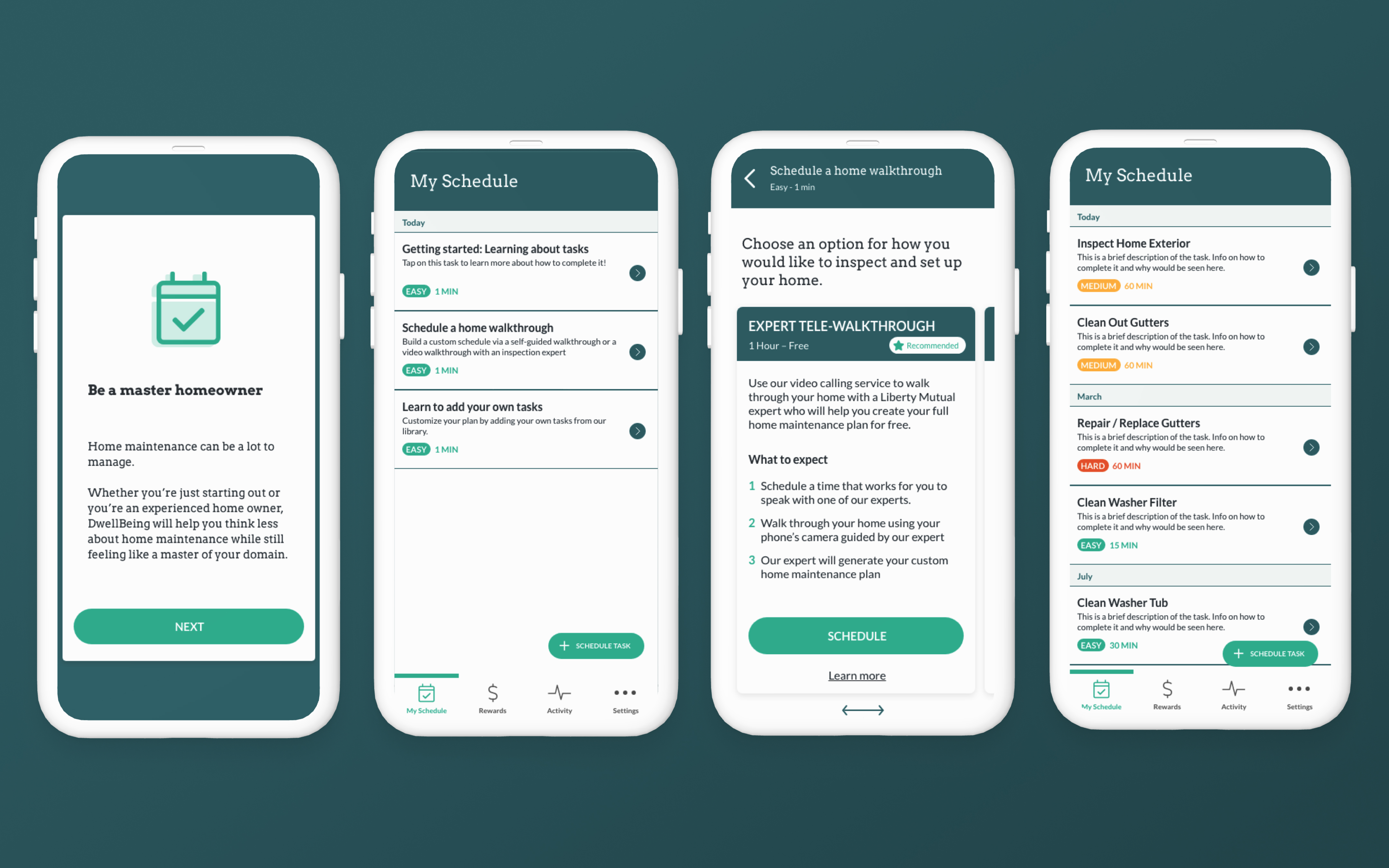
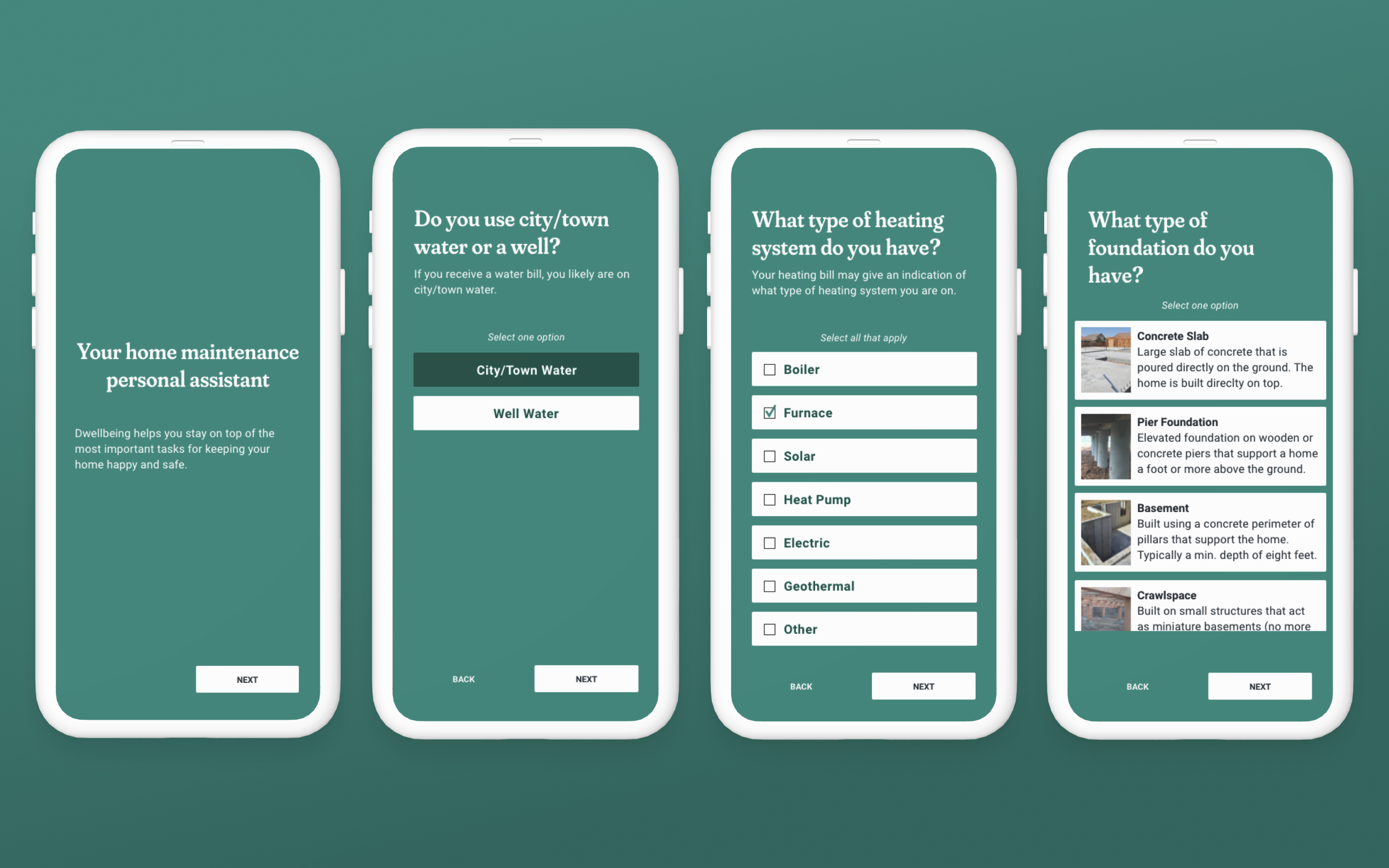
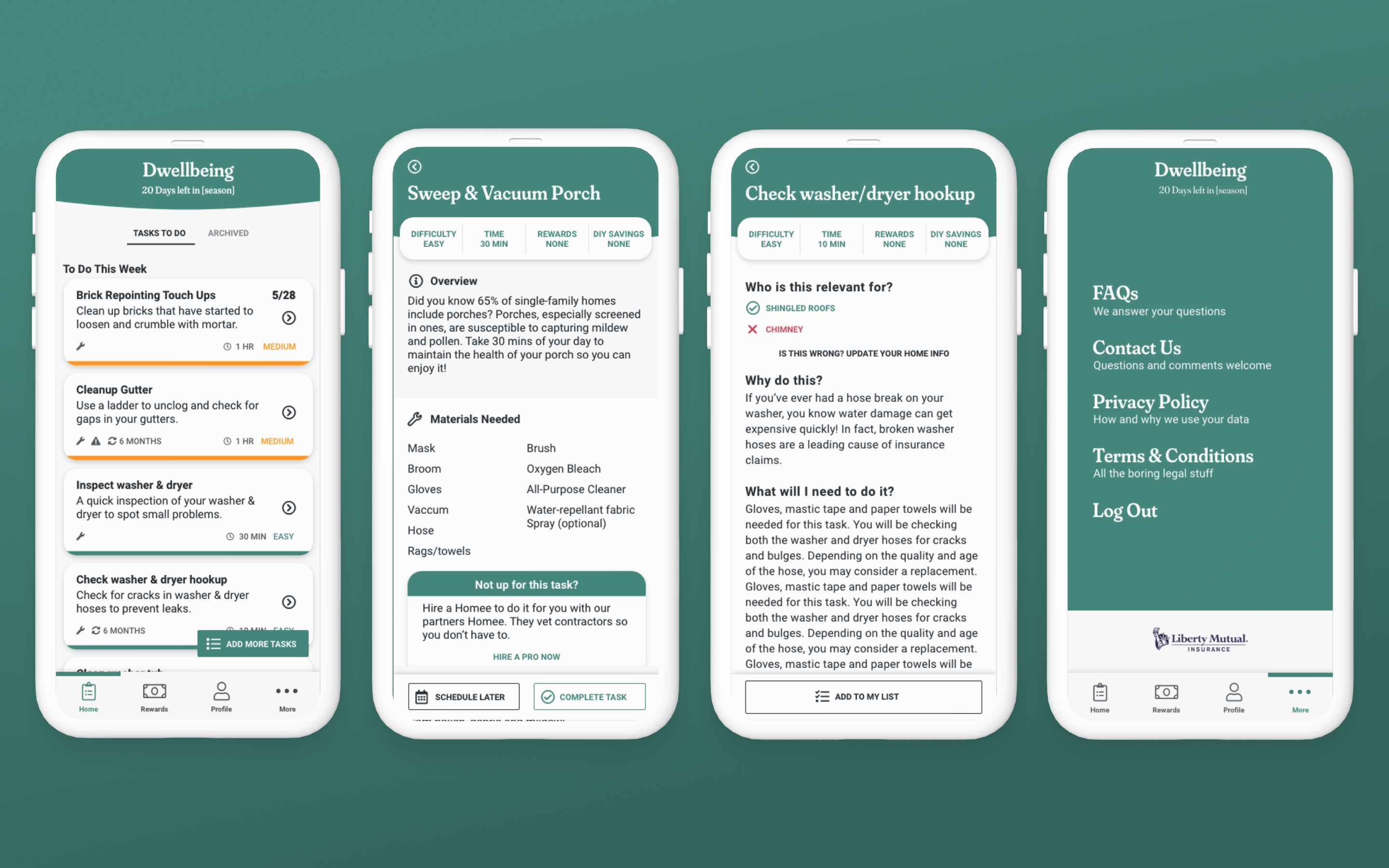
Sprint 5: Onboarding & Customization Prototyping
Put the new onboarding flow and decision tree into prototype testing.
Sprint 6: Behavioral & Habit Formation Research
Conducted interviews with behavioral science experts, including leaders from companies like Noom, The Fabulous, and WAYbetter. Their insights shaped our strategy to:
"People want their home to feel secure. You can’t just sell them pain—they need to feel proud and in control."
Sprint 7: Homeowner Motivation Study (Max-Diff Survey)
Launched a large-scale survey to prioritize homeowner motivations. Key findings:
Cost savings, safety, and sense of accomplishment were top drivers.
Competitive ranking or community comparison features were less appealing.
Sprint 8: Safety & Trust Integration
Refined prototypes to incorporate safety cues, expert endorsements, and user trust-building elements based on prior research.
Visual & Brand Refresh (Sprint 9)
Led brand workshops to align leadership around the app’s voice: knowledgeable, approachable, and helpful. Worked closely with DEPT's visual designers to deliver a refreshed, modern, and professional look, enhancing trust and usability.
Product Vision & Operational Framework
Crafted a product vision document to crystallize the app’s core value proposition and focus. This became a guiding tool for future prioritization, roadmap planning, and stakeholder alignment.
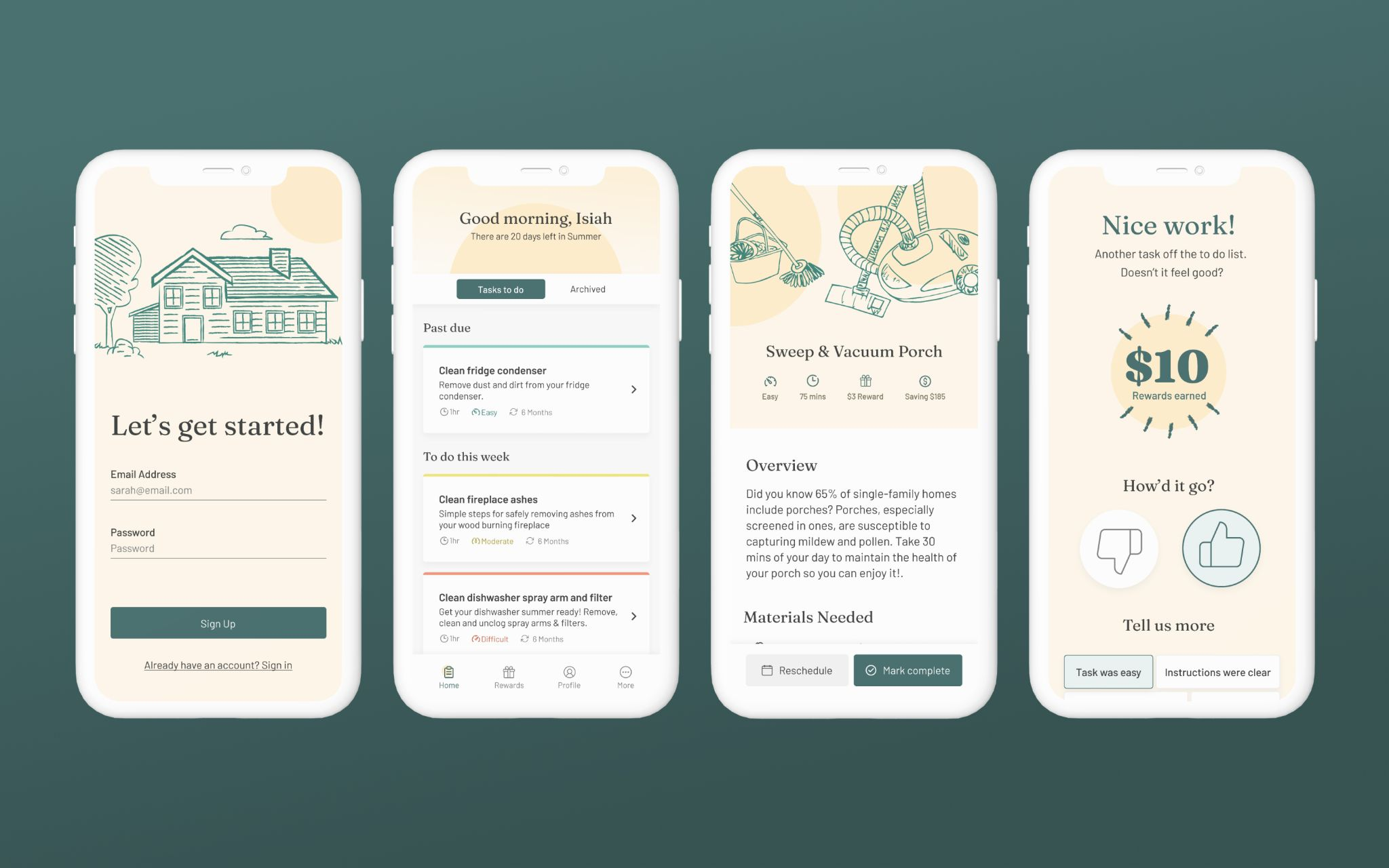
Key Results & Outcomes
Improved engagement:
- Increased home assessment completions and first-task completions after relaunch.
- Users reported higher perceived relevancy of their task lists.
- Visual design updates, tailored onboarding, and refocused task scheduling features delivered an experience that better aligned to user’s needs.
Strategic product clarity:
- Our research uncovered that the challenges associated with scaling a habit-forming app—including the vast effort to maintain a geographically and demographically diverse task library—were significant.
- Armed with clear, validated insights, Liberty Mutual leadership was able to make an informed decision not to continue investing in DwellBeing as a standalone product, thereby saving significant long-term development costs.
Enhanced product team capability:
- Instituted continuous discovery habits, enabling faster, more focused iteration cycles.
- Provided operational tools (task matrix, product vision) to guide future scaling and content development.
Behavioral science-informed product decisions:
- Incorporated expert guidance to avoid common pitfalls like over-reliance on streaks or surface-level motivators.
- Positioned the app around emotional and safety-based drivers, aligning with Liberty Mutual’s core brand promise of protection.
Broader business impact:
- The most promising features and insights from DwellBeing are being repurposed and folded into Liberty Mutual's broader home offerings, maximizing value from the work done.
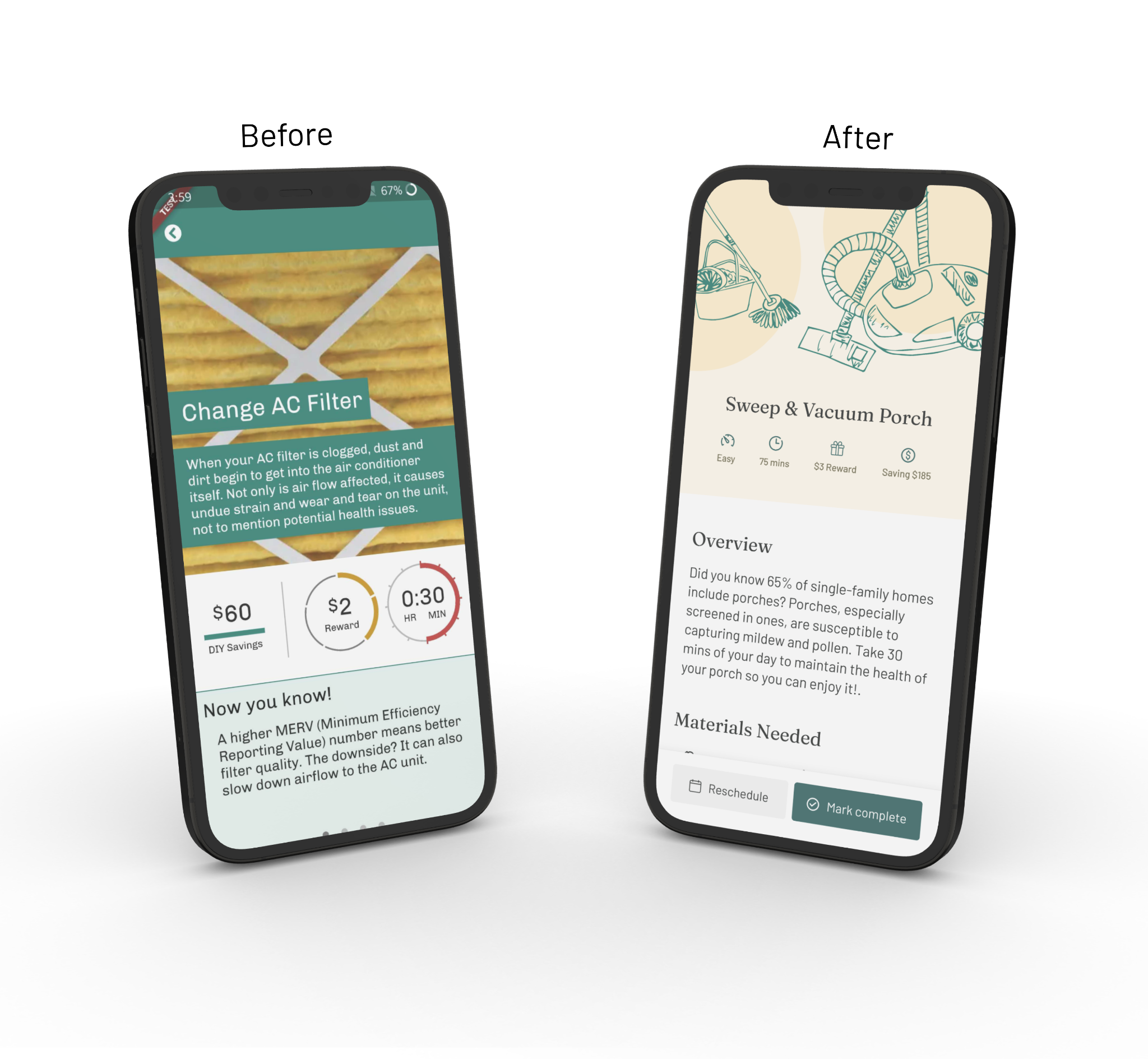
“We did see some positive improvements to overall engagement which was really exciting! We were able to move the needle with respect to # of folks completing the home assessment and also number of folks completing at least one task in the app, which was awesome to see and very aligned with our strategy. So all in all we feel good about where we landed with DwellBeing… and have gained some very valuable insights that we will be able to leverage moving forward!”
— Head of Innovation Lab, Liberty Mutual
Final Reflection
This project wasn't just about trying to "fix" an underperforming app—it was about making the smartest product decision possible, whether that meant scaling up or strategically stepping back. By leading with research, behavioral science insights, and continuous discovery, we empowered Liberty Mutual to make a confident choice that balanced business priorities and user needs.
Ultimately, the engagement:
- Validated key feature improvements.
- Strengthened the internal product team’s discovery and iteration practices.
- Delivered clear evidence that folding DwellBeing’s strongest elements into broader offerings was the most sustainable path forward.
This case illustrates that good product strategy isn’t just about what you build—it’s also about knowing when not to build.
Contact
[email protected]
Seattle, WA
© Nathan Hulsey 2025